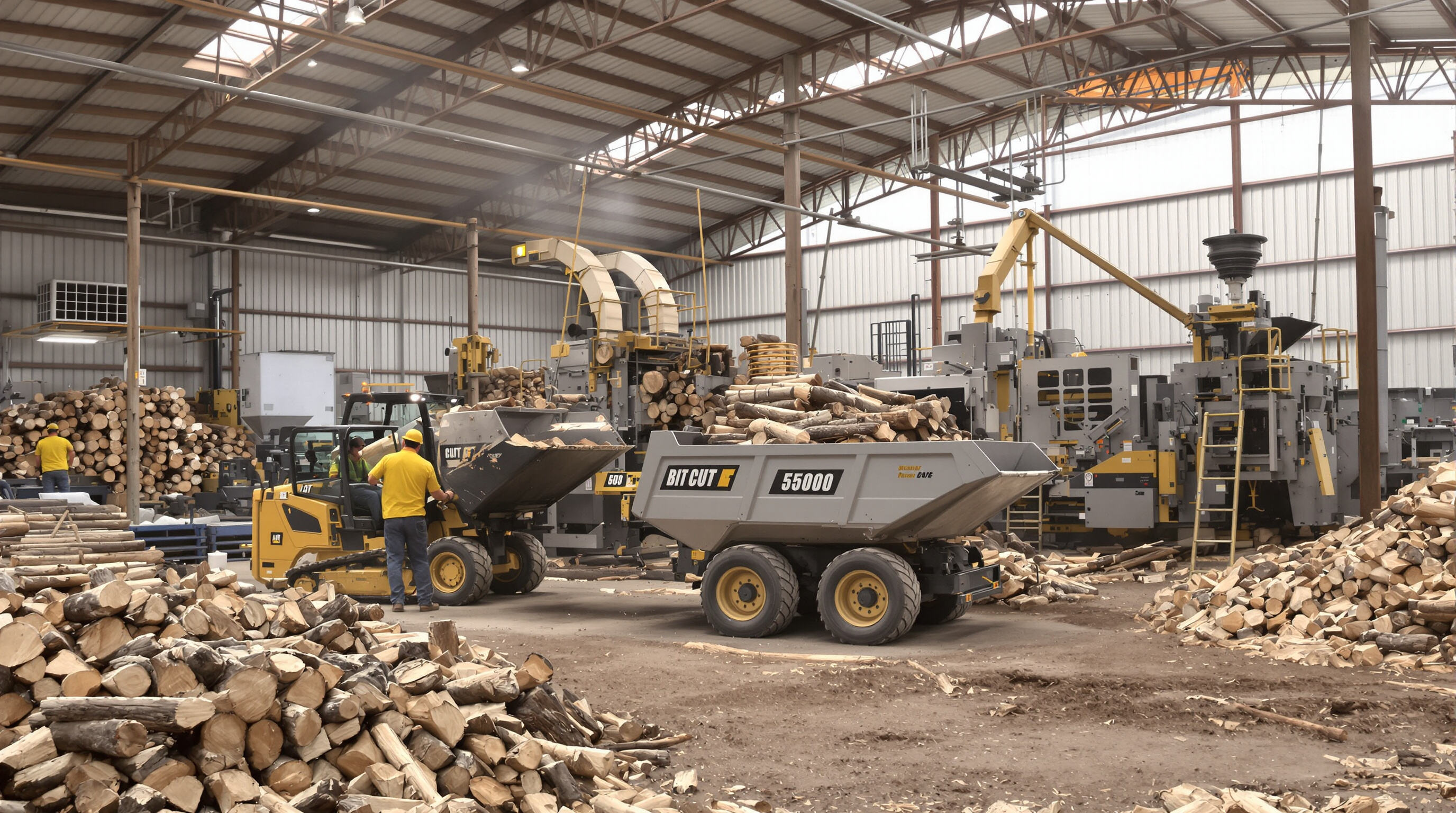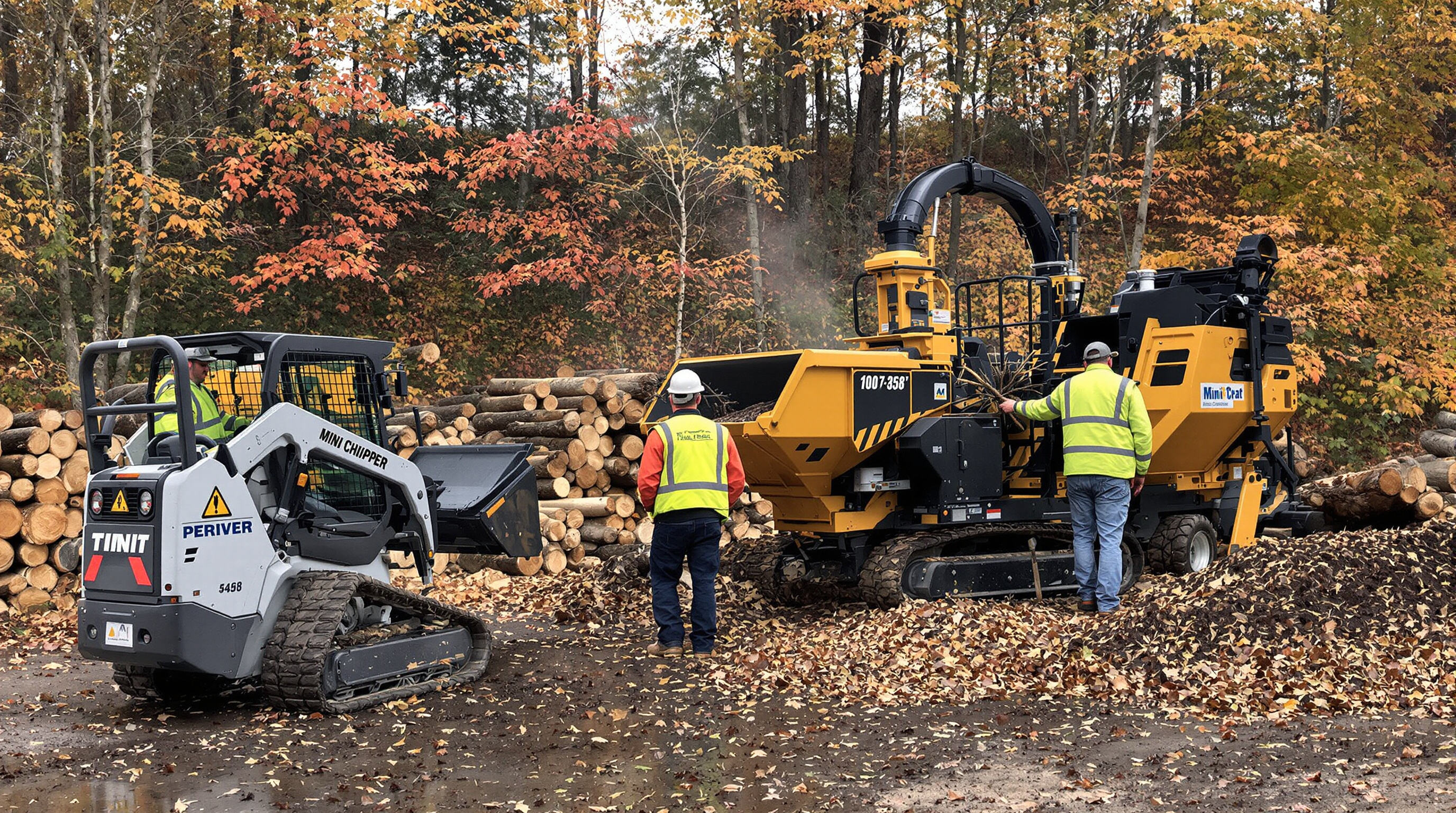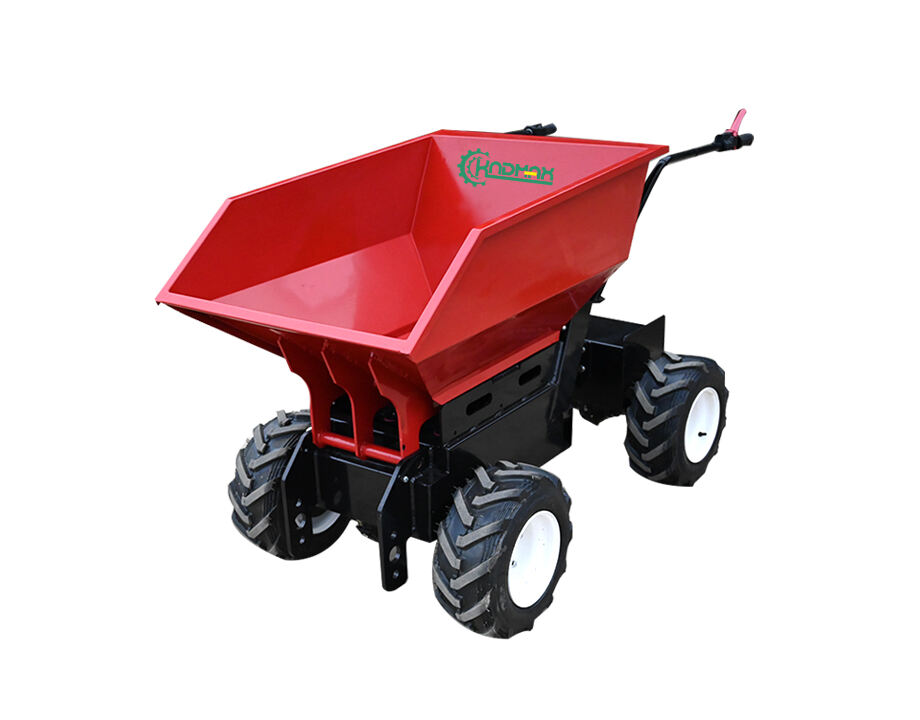Streamlining Wood Processing Workflow with a Mini Dumper

The Role of the Mini Dumper in Coordinating Log Splitter and Wood Chipper Operations
In wood processing operations, the mini dumper acts like the heart of the operation, moving logs back and forth between splitters and chippers without breaking a sweat. The thing is pretty small too, which means operators can weave around all those big machines in the workshop. This actually cuts down on clutter in the workspace by about 30% when compared to dragging stuff around with old fashioned carts. According to some industry numbers we've seen, when everything works together properly, these setups finish jobs roughly 35% quicker while burning 40% less fuel than the old ways did. These stats come from that recent Mini Dumper Market Report folks were talking about last year.
Optimizing Workflow Efficiency and Worksite Organization
Putting the mini dumper in just the right spot creates a one-way system that really streamlines operations. Logs get moved from where they're processed straight to the chippers using those big dumper buckets, and then the wood chips end up right back in the same machine for disposal. Workers don't have to run around as much anymore either something that cuts down their travel time by almost two thirds according to field reports. Plus there's been a huge drop in accidents between people and equipment since implementing this setup about three quarters fewer incidents overall. And when things get rough on bumpy ground, the four wheel drive versions just keep going strong where regular wheelbarrows would struggle badly.
Reducing Labor and Time with Integrated Mini Dumper Use
Integrated mini dumper use reduces crew size needs by 50%. A 2023 study of residential firewood operations found that mechanized systems processed 8 cords daily—compared to 5.2 cords with manual methods—cutting labor costs by $120 per project.
Seasonal Yard Cleanup: A Case Study in Efficiency
A municipal park department reduced autumn cleanup time from 14 to 8 days after adopting a mini dumper-based system. With a 1,100 lb capacity, the unit eliminated multiple wheelbarrow trips, saving 12 crew hours weekly.
Improving Safety and Ergonomics in Log Splitting with Mini Dumper Support
Best Practices for Safe Log Splitter Operation
Modern commercial log splitters include two-handed controls and emergency stop buttons, reducing accident risk by 63% over manual splitting (Swisher Inc., 2024). Operators should inspect hydraulic lines and wedge alignment before use and wear cut-resistant gloves and steel-toe boots. The 2024 Log Splitter Safety Report recommends maintaining a 10-foot clearance zone during operation.
Preparing Logs and Workspace Using Mini Dumper Assistance
Mini dumpers allow centralized log staging, minimizing trips and reducing slip hazards from scattered debris. Their 500–700 lb capacity supports vertical log positioning near the splitter, improving ergonomics and eliminating awkward lifting.
Reducing Physical Strain and Injury Risk Through Mechanized Transport
By automating transport, mini dumpers reduce repetitive lifting and lower musculoskeletal injury rates by 41% in forestry operations (Occupational Safety Review, 2023). Operators report 28% less fatigue in dumper-assisted workflows based on 12-month field trials.
Efficient Handling of Split Wood and Debris
- Process logs in batches of 15–20
- Use the dumper’s tilting bed to guide split wood into transport position
- Deposit debris in designated chipping zones to keep evacuation paths clear
This approach cuts cleanup time by 55% and maintains organized workspaces.
Enhancing Wood Chipper Safety and Performance with Mini Dumper Integration

Essential Wood Chipper Safety Procedures and PPE Requirements
Safety around wood chippers is absolutely essential if we want to avoid serious accidents like getting caught in the machine or hit by flying debris. Anyone operating these machines should definitely have those thick cut resistant gloves on their hands, proper eye gear that meets ANSI standards, and sturdy boots with steel toes. The newer models come equipped with automatic shut off features that kick in whenever someone opens the hopper door, which according to the National Safety Council stats from last year cuts down accident chances by about 27%. And let's not forget about using a mini dumper for loading up the chips too. This little machine lets workers stay away from the actual feeding area while still getting the job done efficiently, so there's just less chance of getting hurt during operation.
Safe Feeding of Branches with Mini Dumper Assistance
Positioning the mini dumper perpendicular to the chipper intake enables mechanical feeding without manual lifting. This eliminates handling of sharp or irregular limbs, addressing 63% of laceration incidents in forestry workflows (OSHA 2022). For best results:
- Use the dumper’s hydraulic bed to angle debris toward the chipper
- Maintain a 3 ft buffer between machines during feeding
- Pre-sort branches exceeding the chipper’s 4–6" capacity
Studies show this method reduces operator fatigue by 40% and doubles processing speed compared to manual feeding.
Maintaining Situational Awareness During Chipper Operations
Key vigilance actions when using mini dumpers with chippers:
| Priority | Action | Purpose |
|---|---|---|
| 1 | Scan for bystanders | Prevent proximity injuries |
| 2 | Monitor debris pile height | Avoid equipment overloading |
| 3 | Check discharge trajectory | Redirect wood chips away from work areas |
Operators should pause every 15–20 minutes to assess ground stability under the dumper and clear jams using lockout/tagout procedures.
Pre-Operation Checks in an Integrated Mini Dumper and Chipper Workflow
Perform these checks before starting:
- Inspect mini dumper hydraulic hoses and couplings for leaks
- Test chipper blade sharpness with a calibrated depth gauge
- Confirm emergency stop buttons function on both machines
- Adjust tire pressure to terrain (15–20 PSI for soft ground)
Integrated systems reduce startup delays by 22% compared to standalone setups, according to forestry workflow analyses. Maintain a 180° sightline between dumper and chipper operators during joint tasks.
Efficient Material Handling and Debris Management Using a Mini Dumper
Transporting Logs, Chips, and Debris with Maximum Efficiency
Mini dumpers efficiently move heavy loads of split logs, chips, and debris across rough terrain with minimal effort. Their compact frame allows navigation between splitters and chippers, while high-tipping beds enable fast unloading. Compared to wheelbarrows, they reduce transport cycles by 60–70%, freeing operators to focus on core processing tasks.
Centralized Mini Dumper Deployment to Minimize Manual Labor
Using the mini dumper as a central hub between stations eliminates redundant movements. Workers can load split logs directly into the bucket for chipping and haul chips to storage without interrupting workflow. This coordination reduces manual handling—single operators can manage tasks that previously required 2—3 people.
Worksite Organization Strategies for Professional Wood Processing
Implement zoning to maximize efficiency:
- Designate processing zones (splitting/chipping) and storage zones (firewood stacks/chip bins)
- Use the dumper for real-time debris removal to prevent tripping hazards
- Schedule transport during natural pauses, such as chipper refueling
This structured approach ensures clean, organized sites and keeps materials ready for the next processing stage.
FAQ
What is the primary function of a mini dumper in wood processing?
A mini dumper primarily functions as a transport and organizational tool, efficiently moving logs and wood chips between processing machines while minimizing clutter and enhancing workflow.
How does a mini dumper improve safety in wood processing operations?
By automating the transport process, a mini dumper reduces manual handling, decreases accident incidence like lacerations or proximity injuries, and offers enhanced situational awareness during chipping operations.
What are the benefits of using a mini dumper for log splitting and wood chipping?
Benefits include increased efficiency, reduced labor and travel time, enhanced organizational workflow, reduced accidents, and improved ergonomic handling of logs and wood chips.

